Related Research Articles

Australian Formula 2, sometimes abbreviated to AF2 or ANF2, is a "wings and slicks" formula racing category in Australia. The category is one of Australia's oldest, dating back to 1964. The current format of AF2 was introduced in 1978. Brian Shead of Cheetah Racing Cars and Garrie Cooper of Elfin Racing Cars were largely responsible for the development of the format, which was devised to suit the needs of Australian drivers, most of whom had little or no sponsorship and had to bear the costs of racing out of their own pockets.
Group 5 was an FIA motor racing classification which was applied to four distinct categories during the years 1966 to 1982. Initially Group 5 regulations defined a Special Touring Car category and from 1970 to 1971 the classification was applied to limited production Sports Cars restricted to 5 litre engine capacity. The Group 5 Sports Car category was redefined in 1972 to exclude the minimum production requirement and limit engine capacity to 3 litres. From 1976 to 1982 Group 5 was for Special Production Cars, a liberal silhouette formula based on homologated production vehicles.
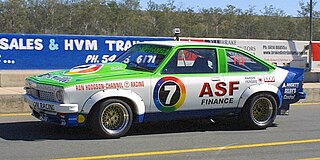
In relation to Australian motorsport, Group C refers to either of two sets of regulations devised by the Confederation of Australian Motor Sport (CAMS) for use in Australian Touring Car Racing from 1965 to 1984. These are not to be confused with the FIA's Group C sports car regulations, used from 1982 to 1992 for the World Endurance Championship / World Sports-Prototype Championship / World Sportscar Championship and the 24 Hours of Le Mans.
The National Series for Sports Sedans, formerly the Australian Sports Sedan Championship, is a CAMS sanctioned national motor racing title for drivers of cars complying with Australian Sports Sedan regulations. This class, essentially a silhouette racing car class, caters for cars of essentially free construction but utilising some of the bodywork of a closed, series production vehicle.
Australian Formula 3 has been the name applied to two distinctly different motor racing categories, separated by over twenty years.

Australian Formula 1 (AF1) was a motor sport category for open-wheeler racing cars which was current in Australia from 1970 to 1983.
The 1972 Australian Sports Car Championship was an Australian motor racing series for Sports Cars. It was sanctioned by the Confederation of Australian Motor Sport as a national title and was the fourth Australian Sports Car Championship.

Appendix J Touring Cars was an Australian motor racing category for modified, production based sedans. It was the premier form of Touring car racing in Australia from 1960 to 1964.
The 1972 Australian Touring Car Championship was a CAMS sanctioned national motor racing title open to Improved Production Touring Cars and Group E Series Production Touring Cars. The championship, which was the 13th running of the Australian Touring Car Championship, began at Symmons Plains and ended at Oran Park after eight rounds.
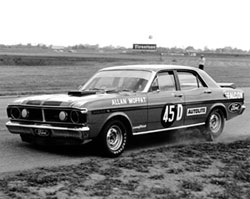
Group E Series Production Touring Cars was an Australian motor racing category for production based sedans competing with limited modifications. It was current from 1964 to 1972.
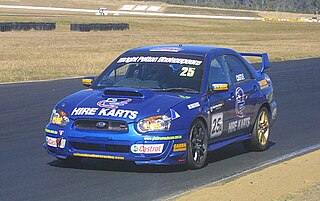
Group 3E Series Production Cars is an Australian motor racing formula for production based cars competing with limited modifications. Group 3E cars formerly contested the Australian Manufacturers' Championship and Australian Production Car Championship titles and compete in the annual Bathurst 12 Hour and Bathurst 6 Hour endurance races.
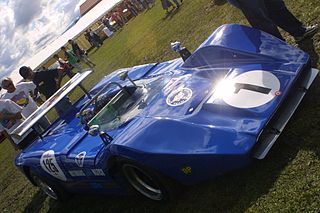
Group A Sports Cars is an Australian motor racing category that CAMS formulated for sports car racing in Australia. Introduced in 1964, it continues today under the name Group 2A Sports Cars.
The 1979 Australian Sports Car Championship was a CAMS sanctioned motor racing title for drivers of Group D Production Sports Cars. It was the eleventh Australian Sports Car Championship and the fourth to be restricted to cars complying with Group D regulations.
Formula Mondial was an international motor racing category which was introduced to replace both Formula Atlantic and the similar Formula Pacific in 1983.
The 1981 Australian Sports Car Championship was a CAMS sanctioned Australian motor racing title open to Group D Production Sports Cars. It was the thirteenth Australian Sports Car Championship and the last to be restricted to cars complying with Group D regulations. The championship was won by John Latham, driving a Porsche Turbo.
The 1977 Australian Sports Car Championship was a CAMS sanctioned motor racing competition for drivers of Group D Production Sports Cars. It was the ninth Australian Sports Car Championship to be awarded by CAMS.

Group N Touring Cars is an Australian motor racing category for touring cars built before December 1972.
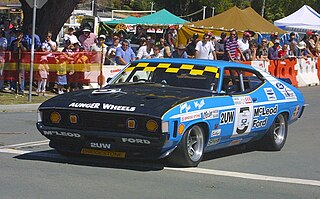
The 1974 Australian Manufacturers' Championship was a CAMS sanctioned Australian national motor racing title open to Group C Touring Cars. The championship, which was the fourth Australian Manufacturers' Championship, was won by General Motors-Holden's.
The 1978 Australian Sports Car Championship was a CAMS sanctioned Australian motor racing title for Group D Production Sports Cars. The title, which was the tenth Australian Sports Car Championship, was won by Ross Mathiesen, driving a Porsche Carrera.
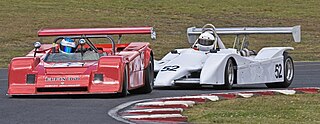
The 1974 Australian Sports Car Championship was a CAMS sanctioned Australian motor racing title open to Group A Sports Cars and Group D Production Sports Cars. The title, which was the sixth Australian Sports Car Championship, was won by Henry Michell driving an Elfin 360 Repco.
References
- 1 2 3 4 5 6 Group D (Production Sports Cars), Open and Closed, CAMS Manual of Motor Sport, 1980, pages 288-289
- ↑ Classification, CAMS Manual of Motor Sport, 1972, page 190
- ↑ Classification, CAMS Manual of Motor Sport, 1978, page 257
- ↑ Australian Title Conditions, CAMS Manual of Motor Sport, 1972, page 88
- ↑ Australian Title Conditions, CAMS Manual of Motor Sport, 1975, page 86
- ↑ Production Sports Cars, Australian Competition Yearbook, 1976 Edition, Page 176-177
- ↑ Pedr Davis, The Macquarie Dictionary of Motoring, 1988, page 451
- ↑ Australian Sports Car Championship, Australian Motor Racing Yearbook, 1981/82, page 140
- ↑ Classifications, CAMS Manual of Motor Sport, 1982, page 264
- ↑ CAMS Manual of Motor Sport 1971, page 5
- ↑ Classifying Vehicles for Road and Track, Australian Motor Manual, May 1965, page 34
- ↑ CAMS Official Organ, Racing Car News, December 1963, page 23